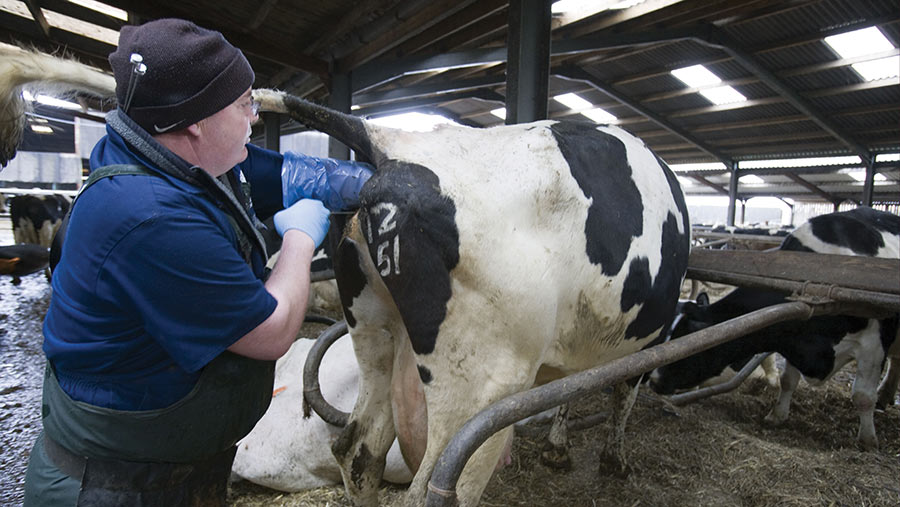How high output US dairy cut medicine spend with genomics
 © FLPA/Shutterstock
© FLPA/Shutterstock Genomic testing has grown in popularity over the last five years, although is still far from the norm, with only 3% of farms undertaking tests.
With superior reliability of 68% in calves just weeks old, genomics can be used to increase the rate of genetic gain with return on investment often quoted as being 3-10%.
The cost of testing and the genomics packages varies hugely, with some tests costing less than £10 a test, while other services, supported by advice and health trait indexes, can cost three to four times that.
See also: How to use genomics to improve dairy economic performance
Major savings
A high-output US dairy has almost halved medicine spend a cow since investing in genomically testing all heifers in 2015.
Swiss Lane Farms near Alto, Michigan, has cut annual medicine cost from $230 a cow (£187) to $125 a cow (£101) and seen its replacement rate fall from 40% to 27% since 2015.
Farm facts: Swiss Lane Farms, Alto, Michigan
- 2,200 Holstein cows yielding 13,308l at 4% fat and 3.2% protein
- 2,023ha of crops, comprising 1,011ha maize, 404ha alfalfa hay, 404ha soybeans and 202ha wheat
- 26% pregnancy rate including ET
- 130,000 somatic cell count
- Six family partners employing 60 people, including Dairy Discovery, a non-profit agricultural education programme
Across a herd of about 2,200 cows, this equates to a saving of $231,000 (£187,110) in a single year.
And while some of these improvements can be attributed to management changes, Tom Oesch, operations manager at Swiss Lane Farms, says “at least half” is down to genetic gain.
They have also cut their replacement rate from 40% to 27% in three years and the top 25% of their herd is producing 2,715 litres more milk than the bottom quarter.
Mr Oesch started genomic testing heifers in 2012 through the Zoetis Clarifide plus programme.
The Zoetis system ranks animals on the Dairy Wellness Profit Index (DWP$), which is based on specific health traits (see table) and has more health traits than the US Department of Agriculture’s national index, Net Merit, (the equivalent of PLI).
Heifer calves are genotyped on the first day of their life for $40 (£32/test), which includes breeding consultancy and advice as part of the package.
All heifers are all genomic tested within the first 48 hours. Some bulls with potential to be very high index are also tested.
Selecting heifers:
- Results are reviewed and DWP$ is analysed at the yearling age before breeding
- The farm requires 60 heifers to calve down every week. Heifers are selected for breeding if they are above the herd’s average DWP$ score.
- Selection criteria are constantly changing.
- Above-average heifers are given sexed semen to a high DWP bull
- Any calf with a DWP lower than its Net Merit score is generally sold for breeding soon after the result comes back
- Nothing that has two cases of respiratory illness is kept for breeding
- Heifers with a lower DWP than Net Merit score but have good fertility and stillbirth traits may be kept for embryo-transfer work.
Swiss Lane herd genetics compared |
||
|
Performance trait |
Prevalence in top 25% by DWP |
Prevalence in bottom 25% by DWP |
|
Retained placenta (heifers) |
1% |
8% |
|
Metritis (heifers) |
9% |
39% |
|
Ketosis (heifers) |
7% |
29% |
|
Displaced Abomasum (heifers) |
0.5% |
6% |
|
Mastitis (heifers) |
4% |
17% |
|
Lameness |
12% |
34% |
|
Scours (0-50 days) |
18% |
29% |
|
Bovine respiratory disease (0-365 days) |
34% |
50% |
|
Death loss (2-365 days) |
3% |
5.4% |
